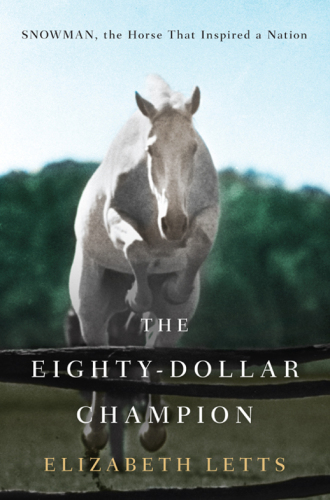
The Eighty-Dollar Champion
Snowman, The Horse That Inspired a Nation
فرمت کتاب
ebook
تاریخ انتشار
2011
Lexile Score
940
Reading Level
4-6
ATOS
7.7
Interest Level
9-12(UG)
نویسنده
Elizabeth Lettsشابک
9780345521101
کتاب های مرتبط
- اطلاعات
- نقد و بررسی
- دیدگاه کاربران
نقد و بررسی

May 9, 2011
Letts (Quality of Care) raises expectations in her newest book by claiming national inspiration in the subtitle. Snowman was a plow horse bought off the slaughter truck for $80 by Danish immigrant Harry de Leyer. Snowman's appearance masked superior jumping talents, and de Leyer took him to the top of the "expensive.... equestrian world was one of the last bastions of the upper-class elite." The events occurred in the late 1950s and early 1960s; however, Letts doesn't quite establish the context, and it's not clear how a horse provided inspiration for workers "starved for dreams" amid "terrifying fears of nuclear age tensions." Diversions such as the decline of the American horse population offer little insight, and nonequestrians will occasionally be puzzled by the lingo, particularly with respect to equine anatomy. Still, Letts is a solid prose stylist; her vivid descriptions of staid Long Island with its "gentle meadows ringed by dogwood trees" provide virtual tours, but it is de Leyer's realization of the American dream that is the real story. Photos.

June 1, 2011
Two long shots, a blue-collar owner and his unlikely horse, make it to the top of the equestrian world.
Responding to the postwar American demand for farm labor, young Harry de Leyer emigrated from Holland and settled in Long Island, and his talent with horses earned him a job as riding master at an all-girls boarding school. Arriving late to an auction in 1956, he offered $80 for a flea-bitten, undernourished, gray gelding, already loaded onto a slaughterhouse truck. His kids dubbed the lumbering, 8-year-old former plow horse Snowman, and the animal's sweet disposition made him a favorite among the Knox School's novice riders. Indeed, de Leyer turned a small profit reselling Snowman to a neighbor seeking a docile mount for his daughter. Only when Snowman repeatedly jumped his paddock fence to return to de Leyer's farm did the trainer belatedly recognize the horse's hidden talent. In telling how de Leyer turned Snowman's untapped potential into a two-time National Horse Show champion, novelist Letts (Family Planning, 2006, etc.) strains too hard to portray the story as an antidote to an era—economic downturn and nuclear dread notwithstanding, the late '50s were hardly as desperate as she makes out—but she's dead right about the unprecedented media environment—glossies and newspapers still flourished, TV was firmly established—that catapulted Snowman's legend well beyond the privileged confines of the show-jumping aficionados. An experienced equestrienne, Letts perfectly understands the high-society horse world, the politics and the intricacies of the high-jump competitions and the challenges facing a low-budget arriviste. At its core, though, this is the story of de Leyer and Snowman, about the elusive qualities that make a champion jumper and the special gifts required to read a horse's signals. Readers skittish around sentiment may balk, but Letts' gentle touch proves entirely suitable to this genuinely sweet tale.
A heartwarming story begging for the Disney treatment.
(COPYRIGHT (2011) KIRKUS REVIEWS/NIELSEN BUSINESS MEDIA, INC. ALL RIGHTS RESERVED.)

September 1, 2011
In 1956, Harry De Leyer, a riding instructor at a Long Island girls' school, spent $80 on a horse that was bound for the slaughterhouse. He thought the animal might make a good horse for his students. But the horse, named Snowman by Harry's four-year-old daughter, turned out to be much morea champion show-jumper. This book is sure to appeal to fans of Laura Hillenbrand's Seabiscuit (2001) and William Nack's Big Red of Meadow Stable (1975), about Secretariat, but should exert appeal beyond that of its equine theme. The school at which De Leyer worked, the Knox School, was, Letts says, a relic from another era, an intensely disciplined place dedicated to self-improvement, where little room remained for relaxation or levity. In the mid-1950s, the place seemed an anachronism, and Letts does an excellent job of contrasting the staid atmosphere of the school with the world outside. A fascinating, extremely well-told story.(Reprinted with permission of Booklist, copyright 2011, American Library Association.)

























دیدگاه کاربران